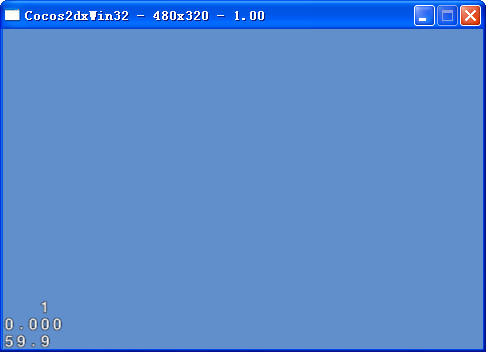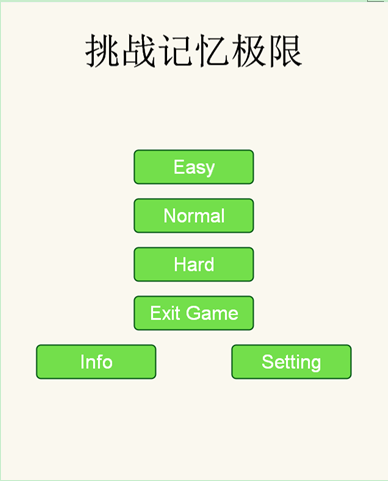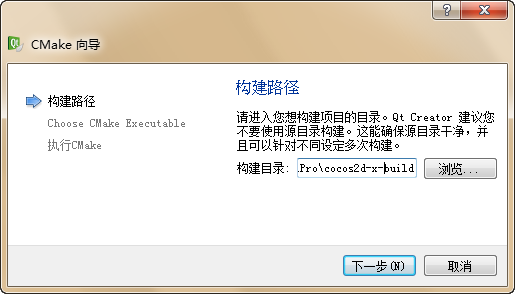在2.x中处理事件需要用到委托代理(delegate),相信学过2.x的触摸事件的同学,都知道创建和移除的流程十分繁琐。而在3.x中由于加入了C++11的特性,而对事件的分发机制通过事件分发器Eventdispatcher 来进行统一的管理。
事件监听器主要有:
-
触摸事件 : EventListenerTouchOneByOne、EventListenerTouchAllAtOnce
-
鼠标响应事件 : EventListenerMouse
-
键盘响应事件 : EventListenerKeyboard
-
加速计事件 : EventListeneracceleration
-
自定义事件 : EventListenerCustom
-
物理碰撞事件 : EventListenerPhysicsContact
-
游戏手柄事件 : EventListenerController
【事件分发器】
1、_eventdispatcher
_eventdispatcher的工作由三部分组成:
(1)事件分发器 :Eventdispatcher。
(2)事件类型 :EventTouch,EventKeyboard 等。
(3)事件监听器 :EventListenerTouch,EventListenerKeyboard 等。
监听器实现了各种触发后的逻辑,在适当时候由事件分发器分发事件类型,然后调用相应类型的监听器。
删除监听器:removeEventListener,removeAllEventListeners。
3、主要函数
//
class Eventdispatcher : public Ref
{
/**
* 添加监听器
* - addEventListenerWithSceneGraPHPriority
* - addEventListenerWithFixedPriority
* - addCustomEventListener
*/
//使用 场景图的优先级 为指定事件添加一个监听.
//listener : 指定要监听的事件.
//node : 这个节点的绘制顺序是基于监听优先级.
//优先级 : 0
void addEventListenerWithSceneGraPHPriority(EventListener* listener,Node* node);
//使用 一定的优先级 为指定事件添加一个监听.
//listener : 指定要监听的事件.
//fixedPriority : 这个监听器的固定优先级.
//优先级 : fixedPriority。(但是不能为0,因为他是场景图的基本优先级)
void addEventListenerWithFixedPriority(EventListener* listener,int fixedPriority);
//用户自定义监听器
EventListenerCustom* addCustomEventListener(const std::string &eventName,const std::function& callback);
/**
* 删除监听器
* - removeEventListener
* - removeEventListenersForType
* - removeEventListenersForTarget
* - removeCustomEventListeners
* - removeAllEventListeners
*/
//删除指定监听器
void removeEventListener(EventListener* listener);
//删除某类型对应的所有监听器
//EventListener::Type::
//单点触摸 : TOUCH_ONE_BY_ONE
//多点触摸 : TOUCH_ALL_AT_ONCE
//键盘 : KEYBOARD
//鼠标 : MOUSE
//加速计 : acceleration
//自定义 : CUSTOM
void removeEventListenersForType(EventListener::Type listenerType);
//删除绑定在节点target上的所有监听器
void removeEventListenersForTarget(Node* target,bool recursive = false);
//删除名字为customEventName的所有自定义监听器
void removeCustomEventListeners(const std::string& customEventName);
//移除所有监听器
void removeAllEventListeners();
/**
* 暂停、恢复在节点target上的所有监听器
* - pauseEventListenersForTarget
* - resumeEventListenersForTarget
*/
void pauseEventListenersForTarget(Node* target,bool recursive = false);
void resumeEventListenersForTarget(Node* target,bool recursive = false);
/**
* 其他
* - setPriority
* - setEnabled
* - dispatchEvent
* - dispatchCustomEvent
*/
//设置某监听器的优先级
void setPriority(EventListener* listener,int fixedPriority);
//启用事件分发器
void setEnabled(bool isEnabled);
bool isEnabled() const;
//手动派发自定义事件
void dispatchEvent(Event* event);
//给名字为eventName的自定义监听器,绑定用户数据
void dispatchCustomEvent(const std::string &eventName,void *optionalUserData = nullptr);
}
//
4、关于事件监听器的优先权
-
优先级越低,越先响应事件。
-
如果优先级相同,则上层的(z轴)先接收触摸事件。
5、使用步骤
(2)创建监听器 :auto listener = EventListenerTouchOneByOne::create();
(3)绑定响应事件函数:listener->onTouchBegan = CC_CALLBACK_2(callback,this);
(5)编写回调响应函数:bool callback(Touch* touch,Event* event) { ... }
【触摸事件】
1、单点触摸:EventListenerTouchOneByOne
单点触摸监听器相关:
//
static EventListenerTouchOneByOne* create();
std::function onTouchBegan; //只有这个返回值为 bool
std::function onTouchMoved;
std::function onTouchEnded;
std::function onTouchCancelled;
//
使用举例:
//
//获取事件分发器
auto dispatcher = Director::getInstance()->getEventdispatcher();
//创建单点触摸监听器 EventListenerTouchOneByOne
auto touchListener = EventListenerTouchOneByOne::create();
//单点触摸响应事件绑定
touchListener->onTouchBegan = CC_CALLBACK_2(HelloWorld::onTouchBegan,this);
touchListener->onTouchMoved = CC_CALLBACK_2(HelloWorld::onTouchMoved,this);
touchListener->onTouchEnded = CC_CALLBACK_2(HelloWorld::onTouchEnded,this);
touchListener->onTouchCancelled = CC_CALLBACK_2(HelloWorld::onTouchCancelled,this);
//在事件分发器中,添加触摸监听器,事件响应委托给 this 处理
dispatcher->addEventListenerWithSceneGraPHPriority(touchListener,this);
//单点触摸事件响应函数
bool onTouchBegan(Touch *touch,Event *unused_event) { cclOG("began"); return true; }
void onTouchMoved(Touch *touch,Event *unused_event) { cclOG("moved"); }
void onTouchEnded(Touch *touch,Event *unused_event) { cclOG("ended"); }
void onTouchCancelled(Touch *touch,Event *unused_event) { cclOG("cancelled"); }
//
2、多点触摸:EventListenerTouchAllAtOnce
多点触摸监听器相关:
//
static EventListenerTouchAllAtOnce* create();
std::function<void(const std::vector&,Event*)> ontouchesBegan;
std::function<void(const std::vector&,Event*)> ontouchesMoved;
std::function<void(const std::vector&,Event*)> ontouchesEnded;
std::function<void(const std::vector&,Event*)> ontouchesCancelled;
//
使用举例:
//
//获取事件分发器
auto dispatcher = Director::getInstance()->getEventdispatcher();
//创建多点触摸监听器 EventListenerTouchAllAtOnce
auto touchesListener = EventListenerTouchAllAtOnce::create();
//多点触摸响应事件绑定
touchesListener->ontouchesBegan = CC_CALLBACK_2(HelloWorld::ontouchesBegan,this);
touchesListener->ontouchesMoved = CC_CALLBACK_2(HelloWorld::ontouchesMoved,this);
touchesListener->ontouchesEnded = CC_CALLBACK_2(HelloWorld::ontouchesEnded,this);
touchesListener->ontouchesCancelled = CC_CALLBACK_2(HelloWorld::ontouchesCancelled,this);
//在事件分发器中,添加触摸监听器,事件响应委托给 this 处理
dispatcher->addEventListenerWithSceneGraPHPriority(touchesListener,this);
//多点触摸事件响应函数
void ontouchesBegan(const std::vector& touches,Event *unused_event) { cclOG("began"); }
void ontouchesMoved(const std::vector& touches,Event *unused_event) { cclOG("moved"); }
void ontouchesEnded(const std::vector& touches,Event *unused_event) { cclOG("ended"); }
void ontouchesCancelled(const std::vector&touches,Event *unused_event) { cclOG("cancelled"); }
//
【鼠标事件】
EventListenerMouse,主要用于监听鼠标的点击、松开、移动、滚轮的事件。
鼠标事件监听器相关:
//
static EventListenerMouse* create();
std::function onMouseDown; //按下鼠标,单击鼠标
std::function onmouseup; //松开鼠标,按下的状态下松开
std::function onMouseMove;//移动鼠标,在屏幕中移动
std::function onMouseScroll;//滚动鼠标,滚动鼠标的滚轮
//
使用举例:
//
//获取事件分发器
auto dispatcher = Director::getInstance()->getEventdispatcher();
//创建鼠标事件监听器 EventListenerMouse
EventListenerMouse* mouseListenter = EventListenerMouse::create();
//鼠标事件响应函数
mouseListenter->onMouseDown = CC_CALLBACK_1(HelloWorld::onMouseDown,this);
mouseListenter->onmouseup = CC_CALLBACK_1(HelloWorld::onmouseup,this);
mouseListenter->onMouseMove = CC_CALLBACK_1(HelloWorld::onMouseMove,this);
mouseListenter->onMouseScroll = CC_CALLBACK_1(HelloWorld::onMouseScroll,this);
//添加鼠标事件监听器,事件响应处理委托给this
dispatcher->addEventListenerWithSceneGraPHPriority(mouseListenter,this);
//事件响应函数
void onMouseDown(Event* event) { cclOG("Down"); }
void onmouseup(Event* event) { cclOG("UP"); }
void onMouseMove(Event* event) { cclOG("MOVE"); }
void onMouseScroll(Event* event) { cclOG("Scroll"); }
//
【键盘事件】
EventListenerKeyboard,主要用于监听键盘某个键的按下、松开的事件。
键盘事件监听器相关:
//
static EventListenerKeyboard* create();
std::function onKeypressed;//按下某键
std::function onkeyreleased; //松开某键
//键盘按键枚举类型 EventKeyboard::KeyCode
//KeyCode的值对应的不是键盘的键值、也不是ASCII码,只是纯粹的枚举类型
//如:
//EventKeyboard::KeyCode::KEY_A
//EventKeyboard::KeyCode::KEY_1
//EventKeyboard::KeyCode::KEY_F1
//EventKeyboard::KeyCode::KEY_SPACE
//EventKeyboard::KeyCode::KEY_ALT
//EventKeyboard::KeyCode::KEY_SHIFT
//
使用举例:
//
//获取事件分发器
auto dispatcher = Director::getInstance()->getEventdispatcher();
//创建键盘按键事件监听器
EventListenerKeyboard* keyboardListener = EventListenerKeyboard::create();
//绑定事件响应函数
keyboardListener->onKeypressed = CC_CALLBACK_2(HelloWorld::onKeypressed,this);
keyboardListener->onkeyreleased = CC_CALLBACK_2(HelloWorld::onkeyreleased,this);
//添加监听器
dispatcher->addEventListenerWithSceneGraPHPriority(keyboardListener,this);
//事件响应函数
void onKeypressed(EventKeyboard::KeyCode keyCode,Event* event) {
if (EventKeyboard::KeyCode::KEY_J == keyCode) {
cclOG("pressed: J");
}
}
void onkeyreleased(EventKeyboard::KeyCode keyCode,Event* event) {
if (EventKeyboard::KeyCode::KEY_SPACE == keyCode) {
cclOG("Released: SPACE");
}
}
//
【加速计事件】
EventListeneracceleration,主要用于监听移动设备的所受重力方向感应事件。
重力感应来自移动设备的加速计,通常支持 (X,Y,Z) 三个方向的加速度感应,所以又称为三向加速计。在实际应用中,可以根据3个方向的力度大小来计算手机倾斜的角度或方向。
1、加速计信息类acceleration
该类中每个方向的加速度,大小都为一个重力加速度大小。
//加速计信息
class acceleration
{
double x; double y; double z;
};
//
2、开启加速计感应
在使用加速计事件监听器之前,需要先启用此硬件设备:
Device::setAccelerometerEnabled(true);
3、加速计监听器相关
//
static EventListeneracceleration* create(const std::function& callback);
std::function onaccelerationEvent;
//
4、使用举例
//
//标签: 显示加速计信息
label = Label::createWithTTF("no used","Marker Felt.ttf",12);
label->setPosition(visibleSize / 2);
this->addChild(label);
//小球: 可视化加速计
ball = Sprite::create("ball.png");
ball->setPosition(visibleSize / 2);
this->addChild(ball);
//获取事件分发器
auto dispatcher = Director::getInstance()->getEventdispatcher();
//需要开启移动设备的加速计
Device::setAccelerometerEnabled(true);
//创建加速计事件监听器
auto accelerationListener = EventListeneracceleration::create(CC_CALLBACK_2(HelloWorld::onaccelerationEvent,this));
//添加加速计监听器
dispatcher->addEventListenerWithSceneGraPHPriority(accelerationListener,this);
//事件响应函数
void HelloWorld::onaccelerationEvent(acceleration* acceleration,Event* event)
{
char s[100];
sprintf(s,"X: %f; Y: %f; Z:%f; ",acceleration->x,acceleration->y,acceleration->z);
label->setString(s);
//改变小球ball的位置
float x = ball->getPositionX() + acceleration->x * 10;
float y = ball->getPositionY() + acceleration->y * 10;
Vec2 pos = Vec2(x,y);
pos.clamp(ball->getContentSize() / 2,Vec2(288,512) - ball->getContentSize() / 2);
ball->setPosition(pos); //设置位置
}
//
5、实际效果
【自定义事件】
1、创建自定义监听器
//
//eventName : 监听器名字
//callback: 监听器函数
static EventListenerCustom* create(const std::string& eventName,const std::function& callback);
//
2、分发自定义事件
自定义的事件监听器,需要通过手动的方式,将事件分发出去。
3、使用举例
//
//获取事件分发器
auto dispatcher = Director::getInstance()->getEventdispatcher();
//创建自定义事件监听器
//监听器名字: "custom_event"
//事件响应函数: HelloWorld::onCustomEvent
auto customListener = EventListenerCustom::create("custom_event",CC_CALLBACK_1(HelloWorld::onCustomEvent,this));
//添加自定义事件监听器,优先权为1
dispatcher->addEventListenerWithFixedPriority(customListener,1);
//手动分发监听器的事件,通过dispatchEvent
EventCustom event = EventCustom("custom_event");
dispatcher->dispatchEvent(&event);
//事件响应函数
void HelloWorld::onCustomEvent(EventCustom* event)
{
cclOG("onCustomEvent");
}
//
4、说明




